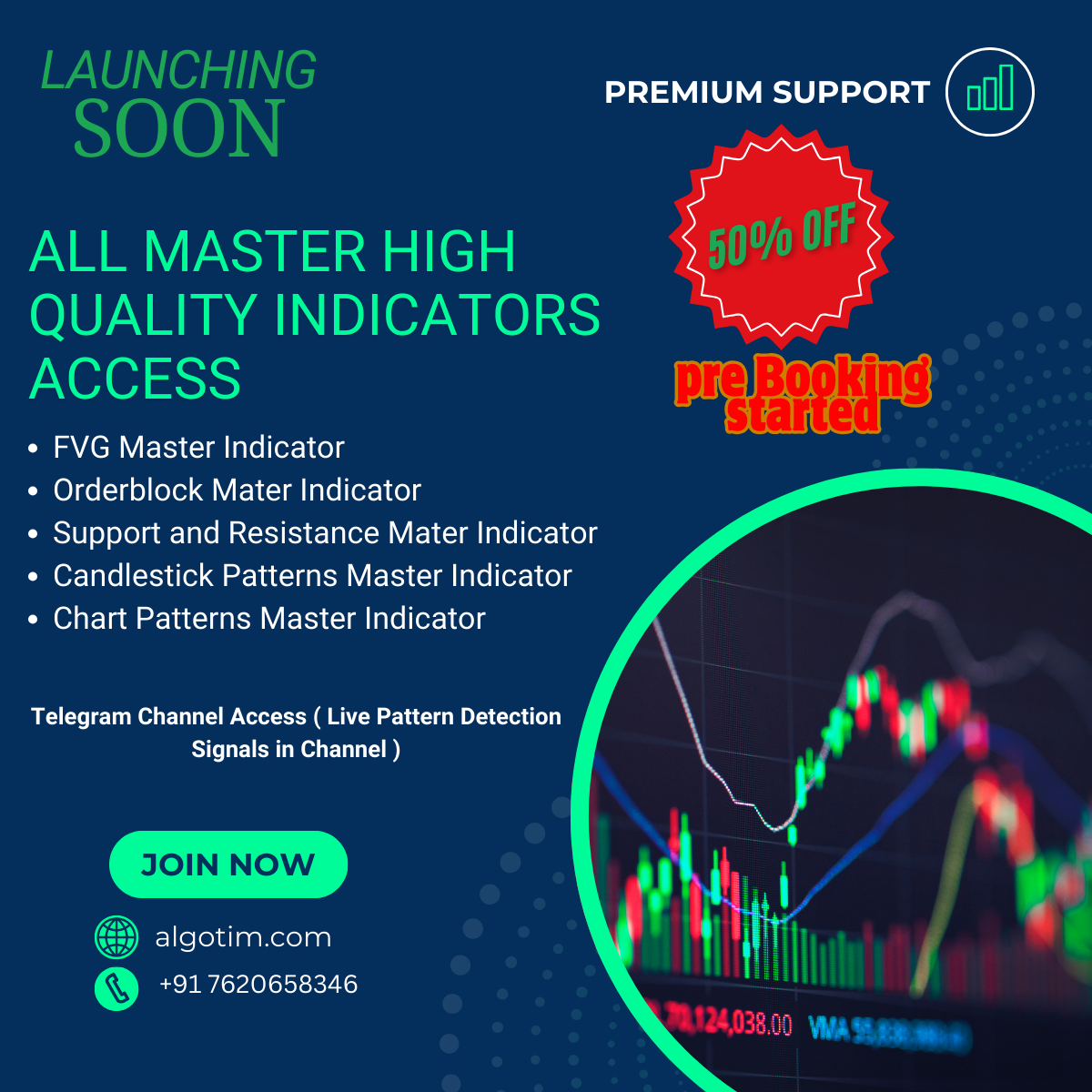
Trading strategies
among financial markets have in the past few years undergone the process of
evolution. Two widely used approaches that are available to traders today are
approach one called algorithmic trading and the second approach called
traditional trading. Each of the methods has its own strengths and weaknesses –
therefore acquiring knowledge of the major distinctions between the two can be
very useful while comparing their operation.

What is Algorithmic Trading?
Algo trading or algorithmic trading is defined as buying/selling of financial
instruments using computer programs and algorithms. These consist of a series
of instructions that are processed to place orders for a trader in terms of
timing, price and quantity among others. Algorithmic trading used mathematical
models, statistical data analysis and data processing to determine the best
time to buy and sell a security and this normally takes a few milliseconds.
What is Traditional Trading?
On the other hand, conventional trading is somewhat more cumbersome and
requires some intervention by people. Professionals or traders for that matter
are expected to figure out what is best to do through their learning,
experience or instincts. These procedures encompass the applicable absolute
values figuring out according to such essential disclosures as proportions as
well as indicators of the material value and the business performance, together
with the additional technical’s evaluation deciding by previous price levels
and trading turnovers.
Key Characteristics of Traditional Trading:Key Characteristics of Traditional
Trading:
1. Human Decision-Making: Trading decisions are made based on available
knowledge, intuition, and experience all rounded up by the traders.
2. Manual Execution: Hitherto, the order is placed manually and the effects
emanate from such a move in that it makes the speed of executing the orders
relatively slower.
3. Qualitative Analysis: Decisions are made based on a variety of factors
primarily measure on qualitative indices like market perception, events, and
data.
4. Flexibility: They can respond to changes in the market or any event that
takes place in the market at the shortest time possible.
Advantages of Traditional Trading:
• Personal Touch: The decision-making processes engendered by cognitive maps
allow traders to use their own judgment and this can be fruitful during
volatile markets.
• Adaptability: Awareness over important events in the news or in the market
that requires reporting by the company.
• Flexibility: It is suitable for traders since they can make changes on their
machineries based on special information and probably the fluctuations.
Challenges of
Traditional Trading:
• Emotional Bias: Humans get carried away by emotions such as fear and greed
that affect their decision making ability; this is not the case with
algorithms.
• Slower Execution: The placing of manual orders can take time to be executed,
and this may lead to losses or missing out on other effective opportunities.
• Limited Capacity: A human trader cannot handle much information and the
information input gets saturated at some point, thus trailing off in high speed
environments.
Understanding Algorithmic Trading
Automated trading also referred to as algo trading employs computerized
programs to transact in the market at a very fast pace and large volumes. These
algorithms are predetermined to run on given guidelines and techniques as
dictated by mathematics and statistics.
Key Characteristics of Algorithmic Trading:Key Characteristics of Algorithmic
Trading:
1. Automated Decision-Making: Traders do not generally make trading decisions
for algorithmic trading based on their input, as everything is automated based
on a set of rules.
2. High-Speed Execution: Those orders are placed and executed at very fast
rates; the time could be measured in milliseconds, microseconds among other
short durations.
3. Quantitative Analysis: Dependent on numerical values and probability
theories in a bid to find trading signals.
4. Scalability: It will be easier to manage great amounts of data and complete
many transactions at the same time.
Advantages of Algorithmic Trading:
• Speed and Efficiency: Man-made algorithms can trade at even blinding speed
compared to human traders, milking every opportunity that comes by in a
particular market.
• Elimination of Emotional Bias: Automated trading takes out the noise
therefore making the decision making process more sound.
• Consistency: The use of algorithms is more preferable because, unlike humans,
they keep to the set rules and guidelines.
• Ability to Process Big Data: Algorithms can scan through thousands of data
sets and seemingly find trading opportunities that are not apparent to the
human traders.
Challenges of Algorithmic Trading:
• Technical Complexity: That is why, creation and, especially, maintenance of
highly complex trading algorithms demand professional knowledge and tools.
• Market Impact: Automated trading, especially the high-frequency trading, can
pose a positive feedback trading and hence lead to increased volatility.
• System Failures: System malfunctions or inaccurate algorithm outcomes lead to
many monetary scams.
• Regulatory Scrutiny: Regulation of the algorithmic trading is also very tight
and there are various policies these firms need to adhere to.
Key Differences
1. Speed and
Efficiency
• Algorithmic Trading: There is no doubt that high speed is one of the greatest
ideas of algorithmic trading. The orders if given to the algorithms will be
executed in one millisecond, and this can never be done by humans. This speed
enables an entity to take advantages of any slight differences in price and any
inefficiencies that prevail in the market and that might not be permanent.
• Traditional Trading: The traditional trading method is also slower as
compared to the automated trading method as the decisions are made by humans
rather than machines. Although this makes it possible to have a deeper look at
the current situation in the market, the slow rate of reading the interface may
make traders fail to see fast Fluctuations in the market.
2. Emotion and Psychology
• Algorithmic Trading: Emotions are well known to affect decisions but it has
been ascertained that algorithms are not affected by it in any way. They are
programmatically defined to function in a specific manner and make assessments
mostly based on facts; thus, they do not have any influence from bias or
carried emotions that could be detrimental to trading operations.
• Traditional Trading: It is a known fact that human beings are always
controlled by their emotions like for instance the fear and greed that they are
capable of having, and this often makes them take wrong decisions. However,
where algorithms are not efficient is in heeding the trader’s instinct or going
with the flow as is witnessed in the market.
3. Complexity and Resources
• Algorithmic Trading: This itineration is characterized by the fact that
owning as well as cultivating dynamic trading algorithms is technically complex
and demanding. Skills required include programming, mathematics/quantitative
skills, and finance/trading. Also, the necessary prerequisites for low latency
and high-speed data processing include solid infrastructure.
• Traditional Trading: In conventional commerce, one has to be very familiar
with market trends, apply certain analytical thought processes, and be able to
interpret signs in the market. Thus, it takes a good deal of time for research
and analysis and does not necessarily call for technical expertise; however, it
does require a good understanding of market trends.
4. Scalability
• Algorithmic Trading: Because algorithms can easily process thousands of
trades at once, they can easily be scaled. They can track many markets and
perform numerous operations and transactions at the same time automatically.
• Traditional Trading: As for humans, they have limitations as to the number of
transactions that can be done at one particular time. As # of records rises,
the chances of making a mistake or overlooking something also rises.
5. Regulation and Compliance
• Algorithmic Trading: This system of trading is very much centralized and
there are a lot of rules and regulation implemented as it involves algorithm
and automatic systems without the direct intervention of the investors to avoid
any form of cheating in the stock market. There are different legal demands
that are placed by regulatory bodies on algorithmic traders where they are
forced to explain their actions and even give elaborate reports.
• Traditional Trading: However, as compared to algorithmic trading, traditional
trading might not pose as many compliance issues even if it is also regulated.
However, human traders have no option other than observing ethical ways of
conducting business and the stipulated regulations.
Insights and Future Trends
Algorithmic and traditional trading are the two types of trading that a trader
has to deal with depending on their objectives, experience, and capital.
Algorithmic trading attacks complexity of trading in several aspects, it is
fast, cuts unnecessary cost and is efficient for handling high amount of data.
One of the advantages of the traditional trading method is the ability to
incorporate the actors’ subjective experience and intuition, which can help in
cases that involve the impact of psychological factors and qualitative
variables.
In the future, with rising artificial intelligence (AI), and machine learning
(ML) applications, it is forecasted that algorithmic trading will also improve.
Such technologies can be used to develop complex models that can attempt to
change dynamically with market conditions to come up with better decisions.
On the other hand, simple buying and selling is expected to persist due to
efficiency and rationality of computer intelligence and especially where social
dilemmata and interaction influence both long-term appraisal and investors’
advisory.
Thus, the algorithmic and the traditional trading possess certain strengths and
weaknesses characteristic for them. The use of algorithms and trading
activities with the assistance of professional traders can be the best decision
as using both pros of the algorithms and the personal experience of the traders
can result in the creation of more effective trading strategies.

0 Comments